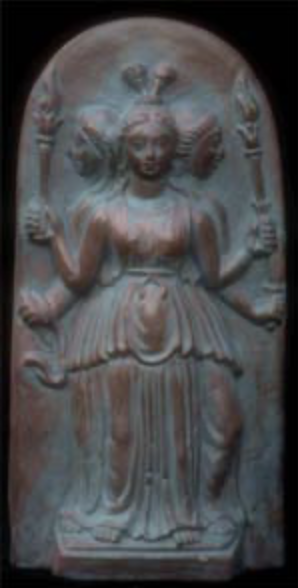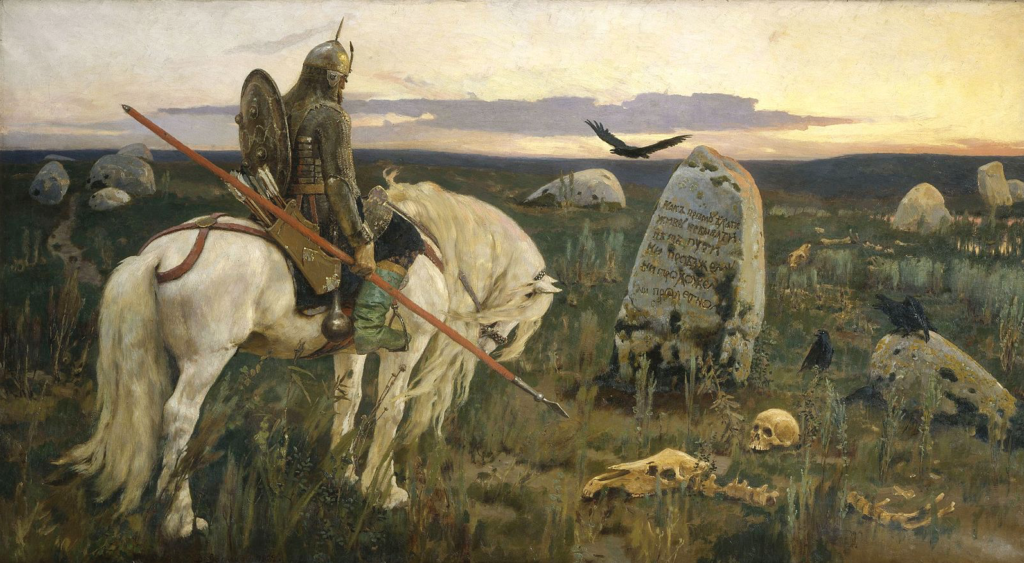
Hecate is one of the most powerful and well-known goddesses in the witch community. She is the queen of witches and is often invoked for her wisdom and power.
Hecate is an ancient goddess whose origins are unknown. She is associated with the moon, crossroads, and witchcraft. She is a goddess of the dark side and is often called upon to help with curses, hexes, and dark magic.
As A Dictionary of Ancient Greek Civilization (P. Devambez) says:
She is a goddess “who presides over necromancers’ spells and the summoning up of the dead. She is invoked by witches and is depicted brandishing a torch and accompanied by mares, bitches and she-wolves. Her powers are terrifying, especially at night and under the treacherous light of the Moon with which she is identified.”

Hecate is a powerful goddess and should be respected by all witches. However, she is not a goddess to be taken lightly and should only be invoked by experienced witches. If you are new to witchcraft or are not familiar with Hecate, it is best to devote yourself to research at this time.
If you are looking to connect with Hecate, you can do a few things. You can call upon her at a crossroads, or you can light a black candle and say her name three times. You can also offer her dark fruits, such as blackberries, figs, and olives.
Goddess of Witchcraft
Hecate is the Greek goddess of witchcraft, sorcery, and ghosts. She is also the patron goddess of childbirth and women in general.
Hecate is often depicted with three heads, representing her three aspects as a goddess: maiden, mother, and crone.
Edith Hamilton (Mythology) describes Hecate’s three aspects:
“…Artemis is identified with Hecate. She is ‘the goddess with three forms,’ Selene in the sky, Artemis on earth, Hecate in the lower world and in the world above when it is wrapped in darkness. Hecate was the Goddess of the Dark of the Moon, the black nights when the moon is hidden. She was associated with deeds of darkness, the Goddess of the Crossways, which were held to be ghostly places of evil magic.”

Hecate is often invoked by women who need her help, especially during childbirth. She is also invoked by those who need her help in dealing with the dark aspects of life, such as death, violence, and evil.
In Mythology
Hecate was most notably mentioned in Homer’s Iliad, where she was the goddess of the underworld.
However, she may be an evolution of the midwife goddess Heket or Hekat of ancient Egypt. This could also explain why a goddess of magic is associated with childbirth.
In some myths, Hecate was depicted as a terrible and dangerous goddess. In others, she was seen as a benevolent and helpful figure. She was often associated with the moon’s dark side and was seen as a goddess of the night.

Symbolism
Hecate is a goddess of transitions and is associated with change and transformation. Her symbols include the crescent moon, the serpent, and the crossroads.
The crescent moon is a symbol of the night, and the serpent is a symbol of rebirth. The crossroads are a symbol of transition and represent the threshold between the worlds of the living and the dead.
Three-way crossroads are particularly magical in the Hecate traditions. According to Barbara G. Walker (The Woman’s Encyclopedia of Myths and Secrets):
“Hellenes tended to emphasize her Crone or underworld aspect, but continued to worship her at places where three roads met, especially in rites of magic, divination, or consultation with the dead.”

She is also represented by the black dog, a foreboding figure in folklore. We see this correlation in The Black Arts (Richard Cavendish):
“The dog is the beast of Hecate, the moon in her most baleful aspect, the pale mistress of death and ghosts…”
Hecate is often portrayed as a dark and mysterious figure, and her symbols are often misunderstood. However, her symbolism is very complex and represents the changes and transitions that we all go through in life.

